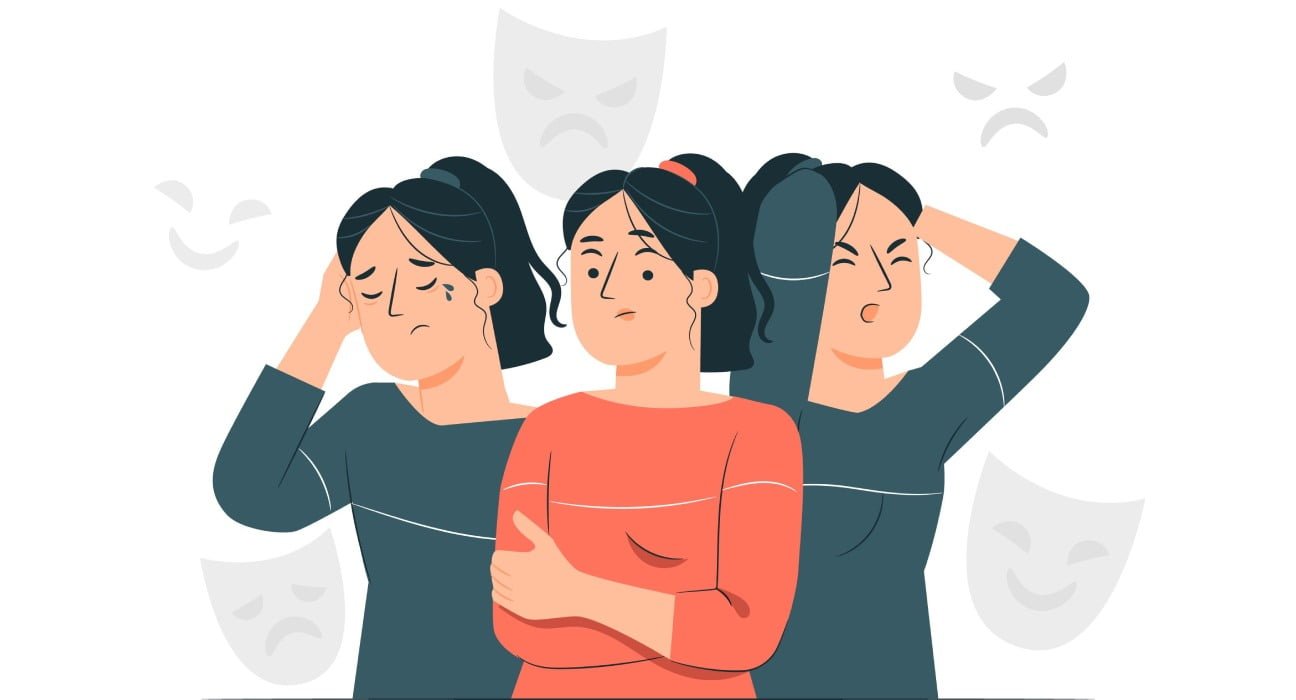Bipolar disorder is classified as a mental health condition in which the person is experiencing manic and depressive episodes together. The oldest recognition of bipolar disorder was given in medical literature, at the time of Hippocrates (460-370 BC). Hippocrates was the one who mentioned about the two states of bipolar disorder feeling excessively high (now referred as mania) and feeling excessively low (now referred as depression). According to him, extreme sadness was referred to as ‘melancholia’, meaning black bile, on the other hand extreme excitement caused excessive yellow bile. After him various other physicians (like, Aretaeus of Cappadocia and Plato) and psychiatrists (like, Jean-Pierre Falret, Jules Baillarger, Karl Kahlbaum, and Emil Kraepelin) explained this disorder according to their own perspectives. There was a time this disorder used to be referred to as “folie circulaire” meaning continuous cycle of depression and mania with some time intervals, “folie à double forme” meaning phases of mania and depression without intervals of time, and “manic-depression insanity”. After that the development in definition of this disorder can be witnessed in DSM. There are several factors that influence the process of diagnoses of bipolar disorder, like cultural differences, geographical locations and differences in expression amongst gender. Everyone’s expression of their experiences is different, but they learn norms of their culture and society in which they live, which further plays a great role in shaping the way people will respond or express.
Bipolar disorder has two main types which vary in their severity of episodes and duration for which those episodes last. This usually comprises of feeling depressive “lows” and experiencing manic “highs”.
Types & Symptoms:
The two types of bipolar disorder are as follows:
- Bipolar I Disorder: It is diagnosed when the person experiences or has experienced at least one major manic episode with major depressive episodes for the most part of their lifetime.
- Bipolar II Disorder: It is diagnosed when the individual experiences or has experienced at least one hypomanic episode (similar to a manic episode but less in severity) with one major depressive episode (at least) during their lifetime.
Symptoms of Bipolar Mania and Hypomania consist of: getting distracted easily, getting lesser duration of sleep, inflated or elevated mood, delusions or hallucinations, imprudent or inappropriate risk-taking behavior, impaired judgment, being hypersexual, involved in excessive talking, having inflated or grandiose sense of self, experiencing racing thoughts, and feeling irritable, agitated and aggressive.
Manic episode continues for 7 days at the minimum. Hypomanic symptoms, on the other hand, include similar symptoms but the functioning of the person isn’t impaired markedly as in manic episode. In hypomania, psychotic symptoms are not present.
Symptoms of Bipolar Depression consists of: feeling indecisive or experiencing trouble in concentrating, lack of interest in work that gave pleasure earlier, they aren’t able to get out of bed, feeling guilty or hopeless, crying for long durations for no apparent reason, either sleeping a lot or having difficulty in sleeping, thoughts arise to harm their own self or of committing suicide and feeling less interested in their health and nutrition.
Negative thoughts and disinterest in daily functioning can be initial signs of depression that can be noticed by others.
Uncommon Mood Disorder: In Cyclothymia, the person experiences changes in mood that are not as serious as Bipolar I or Bipolar II but are significant enough to be noticed. It usually appears in adolescent years.
Causes and risk factors that can be associated in diagnoses of Bipolar I and Bipolar II disorder, which can be understood as follows:
- Causes & Risk Factors of Mania: Increased level of stress, brain injury, tumor in brain, encephalitis, side effect of medications, misuse of alcohol or recreational use of drugs, brain stroke, deprivation in sleep, and trauma or abuse.
- Causes & Risk Factors of Hypomania: Genetic factors, alcohol misuse or recreational use of substances, increased levels of stress, side effect of medications, and prolonged use of herbal supplements.
There are certain disorders that can occur alongside with bipolar disorder, or have similar symptoms and signs that may complicate the process of diagnoses, like, Attention Deficit Hyperactivity Disorder, Alcohol or Substance Use Disorder, Borderline Personality Disorder, Depression, Eating Disorders, Panic Disorders, Dementia, Schizophrenia, and Schizoaffective Disorder.
Treatment:
Medications are crucial for controlling the imbalances of hormones in brain that lead to mood changes in bipolar disorder. It is important to get medications are prescribed by a psychiatrist as they know which medication will have the most beneficial impact on the patient’s current situation. For mania, several antipsychotics (like, aripiprazole, lurasidone, risperidone, quetiapine, cariprazine, and olanzapine) and mood stabilizers (like, divalproex sodium, lithium, carbamazepine) are prescribed for regulating mood changes. For hypomania, antipsychotics and mood stabilizers (like, lithium, valproic acid, anticonvulsants, and benzodiazepines) are prescribed for regulating mood changes in hypomania.
Pharmaceutical medications, alone cannot provide appropriate aid, thus, it is important to go for regular therapy sessions. Therapeutic session aids the emotional and mental well-being of the person which is vulnerable and requires support of professional mental health experts. Therapeutic sessions can help in addressing the feelings, cognitions, and behaviors that are faulty and impair normal functioning of the patient diagnosed with bipolar disorder. The therapeutic approaches that help in aid the treatment processes are: cognitive behavioral therapy, dialectical behavioral therapy, and family therapy.
Suggestions:
There are various lifestyle changes and coping strategies to smoothen the path treatment for bipolar disorder. Avoiding alcohol consumption, taking a nutritive diet, doing regular physical activity or exercise, limiting caffeine intake, maintaining sleep hygiene for better sleep, and keeping track of doctor’s appointment are necessary lifestyle changes. For coping with bipolar disorder, it is necessary to ask for support from family and friends, as there are time when the journey of treatment can feel too long but when you have a supporting shoulder then it might become better than before. For progressing on your own, journaling can act as a good coping and monitoring tool.













Leave feedback about this